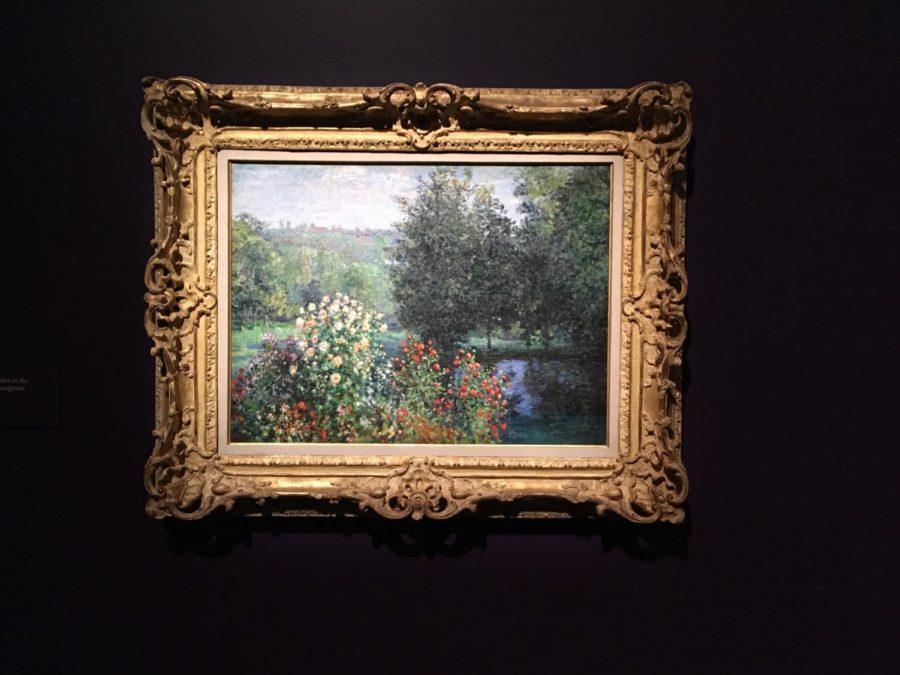Claude Monet: The Truth of Nature Opens at the Denver Art Museum
“The Rose Bushes in the Garden at Montgeron”, 1876 Claude Monet (French, 1840-1926)
November 14, 2019
On Oct. 21, the Denver Art Museum became the only venue in the U.S. in more than two decades to host Claude Monet: The Truth of Nature, an exhibition displaying 120 pieces made by French Impressionist Claude Monet (1840-1926).
This showcase has attracted people from all over the nation, causing an influx of people to come and visit the museum in Colorado before the exhibition comes to an end on Feb. 2, 2020 and is moved to Museum Barberini in Potsdam, Germany during spring of 2020.
On Monday, Nov. 11, the French class from Wheat Ridge High School visited the Denver Art Museum and had the opportunity to learn about Monet’s life, about the historical age of the Impressionist Movement, and about the evolution of Monet’s work. His works of art are nothing short of masterpieces that scholars, critics, and historians still reference today in anything art-related.
Throughout the entire exhibit, each section is divided off into places that Monet had traversed to from the beginning of his artistic endeavors until the end. The endless display of everything he took the time to create is gracefully placed in order so people can guide themselves through what may be deemed as a historical-contemporary art lesson. The exhibition includes audio recordings and short paragraphs explaining where and why Monet decided to go to certain places around the world.
Monet used warm, pure colors to create effects of light and reflections from the water. He applied paint in long and short strokes in an effort to give his paintings ripples, sparkles, and any other additional effects that would make it more rich, redolent, and lively. His palette range gradually changed over the course of his life as an artist, and the composition of his paintings were cleverly, naturally, and neatly structured. If a set of modern eyes were to examine his work, nobody would question his impressionist style and his way of mastering the art of light and atmosphere. However, contextually, his work back then was shunned for his incapability to conform to the norm.
After being asked about the purpose of this exhibit and why people should take the time to go see it, Wheat Ridge High School science teacher Toni Budoff said, “Art has always been an experience of human nature. Our love, our desires, our passion. Without it, humans can’t enjoy life to its fullest.” Additionally, she explained that learning about a key figure like Monet is quintessential to how much we, specifically adolescents, know about French culture.
All in all, I thought that the exhibit was insightful, reflective, and engaging. Prior to seeing the exhibit, I knew the absolute minimal about Monet and his importance to the world of art. I now recognize the contributions Monet was able to make during the Impressionists Movement and how that has influenced the way our society perceives art. His influence went beyond the world of painting and has become socially relevant in our world today. Art is a fundamental part of our world thanks to people like Monet. Ticket prices for adults are $27 and $5 for people under 18. Take the time to visit this presentation in all its glory as a way of honoring Monet because if you didn’t, that would be a disservice, wouldn’t it?


